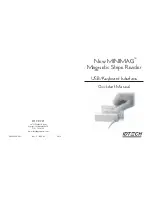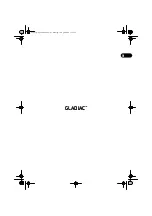
PCI Quad 422/485 Card
Chapter 10 Optional RS422/485 Operation
•
49
The AT Dual Port RS422/485, Opto Isolated AT Dual Port RS422/485 and AT Velocity
RS422/485 cards have the correct 120 Ohm (nominal) terminating resistors for the RXD
twisted pair line and the CTS twisted pair line fitted on the RS422/485 card for both the
serial ports on the card.
There is no need to add any more at the PC end.
The terminating impedance’s shown later in the wiring diagrams are automatically
provided by the on board resistors and do not have to be added by the user.
Fail Safe Open Circuit Detection
.
Open circuit is when there are no drivers on the circuit. This occurs by design in party
line multi driver/receiver systems and unintentionally when the twisted pair line is
accidentally cut or disconnected or the transmitting device fails. In RS485 party line
systems there are extended periods of time when none of the many possible talkers are
gated onto the bus. This is known as the line idle state and occurs when all the driver
outputs are in the high impedance state. The lines float, perhaps being pulled to the high
or low state by noise or other voltages on the line.
Without fail safe open circuit detection false start bits are detected by the receivers,
either corrupting good communications or causing noise to masquerade as good data.
The on board fail safe open circuit detection causes the receiver to go to a known, pre-
determined state and prevents false start bits and bad data being detected during open
circuits.
Fail Safe Short Circuit Protection.
Short circuits are when the two lines of a twisted pair are connected together. This
occurs due to either accidental damage to the cable or due to failure of one or more
transmitter/receivers on the line. The short circuit condition is dangerous since damage
to the receiver may occur and communication may be corrupted or prevented.
The on board fail safe short circuit detection prevents the line impedance from
going to zero and thus protects the inputs of receivers and the outputs of drivers.
RS422 Operation.
Generally, in RS422 systems all 8 signal lines from the 9 pin D connector participate in
the data transfer sequence, thus 4 twisted pair cables are used. One twisted pair carries
the TXD data outwards, one pair brings the RXD data inward, another pair carries the
RTS handshake outwards and the fourth pair brings the CTS handshake inwards. There
is no need to carry the ground from one device to another.
This RS422 arrangement allows data to be transmitted and received simultaneously
since each signal has its own data cable pair. In addition, the receiver can set RTS true
so telling the transmitter on its CTS input that the receiver is ready to accept data. In this
way, no data will ever be transmitted when the receiver is unable to accept it, due to a
full input buffer etc. And so no data will be lost.
RS422 Serial Port Cables.
Use screened twisted pair Belden cable 9729 and 9829, L type 2493 and 2919 or IBM
Part No 4716748 cable to make the RS422 connection. Unscreened Belden type 8795
may also be used in less noisy environments.
The on board resistor networks terminate the receiving end of the twisted pair cable in
its characteristic impedance.







































